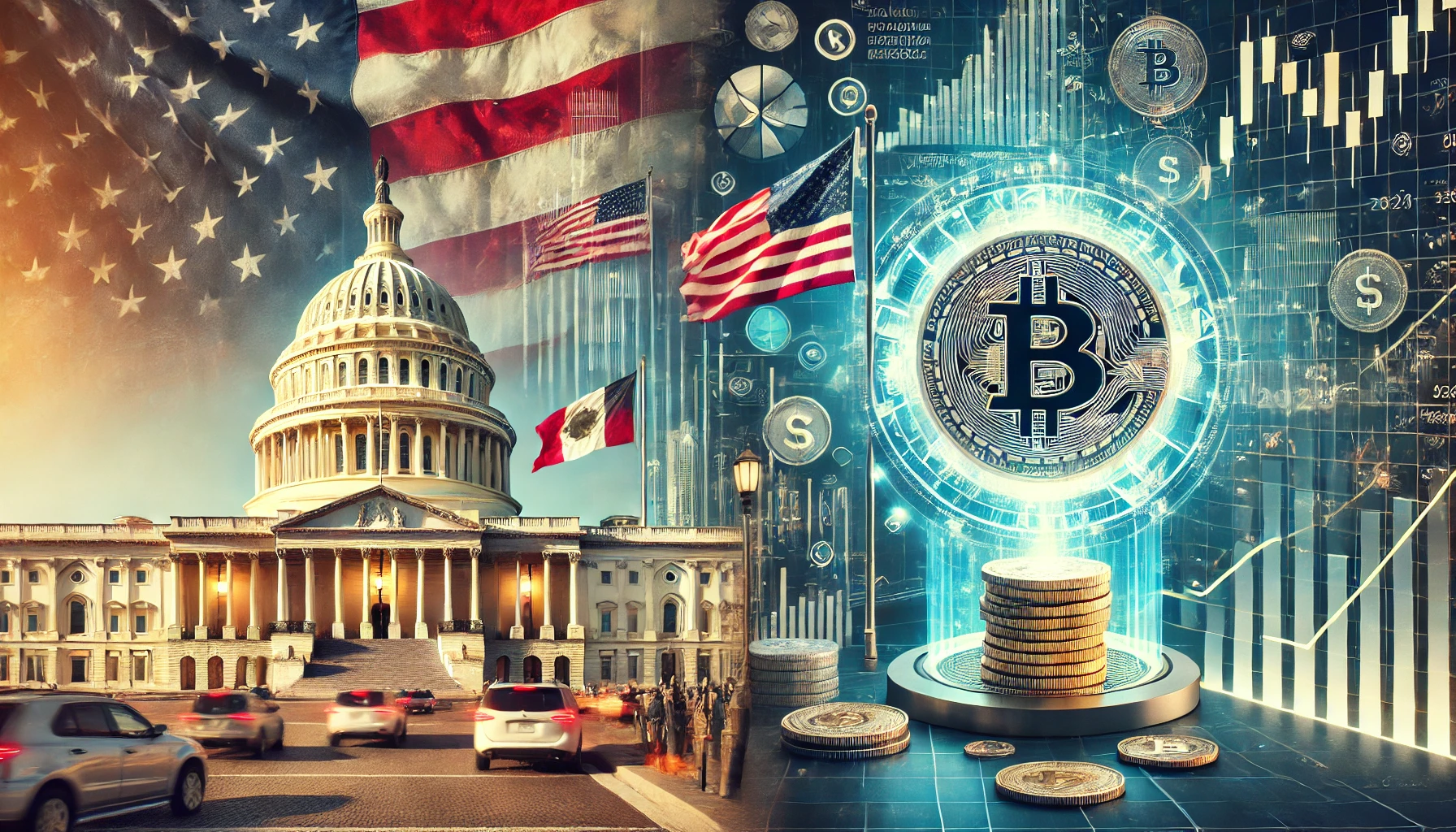Introduction
As former President Donald Trump prepares to address Congress on March 4, 2025, his speech is expected to dominate headlines and set the stage for his policy agenda. With major announcements anticipated on trade tariffs affecting Canada and Mexico and a proposed cryptocurrency strategic reserve, political and economic analysts are closely watching how these policies could reshape the U.S. economy, global trade, and financial markets.
This article provides a comprehensive analysis of Trump’s key policy proposals, their potential impact, and the reactions from lawmakers, economists, and the public.
Key Highlights from Trump’s March 4 Address to Congress
1. Trade Tariffs on Canada and Mexico: A New Trade War?
One of the most anticipated aspects of Trump’s speech is his announcement of new tariffs on Canada and Mexico. The details of these tariffs are expected to have major consequences for North American trade.
Proposed Tariffs and Their Justification
- 25% tariff on Canadian steel and aluminum imports
- 20% tariff on Mexican auto parts and agricultural products
- Justification: Trump argues that unfair trade practices and currency manipulation by these nations have negatively impacted U.S. manufacturers and farmers.
- Protectionist economic stance: Trump’s administration is framing these tariffs as a way to protect American jobs and industries from foreign competition.
Economic and Political Impact of the Tariffs
- U.S. Businesses and Consumers: Higher tariffs could lead to increased costs for American manufacturers that rely on Canadian and Mexican imports, ultimately raising consumer prices on cars, food, and household goods.
- Retaliation from Canada and Mexico: Both nations have signaled potential countermeasures, which could escalate into a trade war similar to the one seen during Trump’s first term.
- USMCA Under Threat? These tariffs could undermine the United States-Mexico-Canada Agreement (USMCA), a trade deal that replaced NAFTA in 2020.
2. Trump’s Cryptocurrency Strategic Reserve Proposal
In a move that has surprised both traditional financial institutions and the cryptocurrency community, Trump has proposed the creation of a U.S. cryptocurrency strategic reserve.
What Is the Cryptocurrency Strategic Reserve?
- A federally controlled reserve of major digital assets such as Bitcoin, Ethereum, and stablecoins.
- Trump claims this reserve would stabilize the U.S. financial system, hedge against inflation, and reduce reliance on the Federal Reserve’s monetary policies.
- The proposal suggests that up to $500 billion in digital assets could be held in this reserve by 2030.
Potential Impact on Crypto Markets and the Economy
- Increased Institutional Legitimacy: The U.S. government’s direct involvement in crypto could drive institutional investment and lead to further mainstream adoption.
- Regulatory Concerns: Critics argue that this move could lead to greater government control over decentralized digital assets, undermining the fundamental principle of cryptocurrency.
- Market Volatility: Following Trump’s announcement, Bitcoin and Ethereum saw significant price fluctuations, with analysts predicting continued volatility in the short term.
Reactions to Trump’s Speech: Supporters vs. Critics
Supporters of Trump’s Policies
- Trade Protectionists argue that tariffs will revitalize American industries and bring back manufacturing jobs.
- Crypto Enthusiasts see the strategic reserve as a step toward mainstream adoption and financial innovation.
- Nationalists and Economic Conservatives support the idea of reducing dependence on foreign economies and strengthening U.S. self-reliance.
Criticism from Economists, Lawmakers, and Business Leaders
- Free Market Economists warn that tariffs could lead to economic stagnation, job losses, and higher consumer prices.
- Canada and Mexico’s Trade Representatives have condemned the tariffs, calling them a violation of USMCA and a step backward for North American economic cooperation.
- Crypto Experts caution that government involvement in digital assets could lead to regulatory overreach and stifle decentralization.
How Trump’s Policies Could Reshape Global Trade and Finance
1. The Future of U.S.-Canada-Mexico Trade Relations
- The USMCA trade agreement could come under strain, leading to potential renegotiations or disputes at the World Trade Organization (WTO).
- American companies dependent on North American supply chains may face higher production costs, leading to outsourcing to other markets like China or the European Union.
2. Cryptocurrency Regulation and Government Adoption
- Trump’s strategic crypto reserve could push global governments to adopt similar digital asset reserves.
- Increased regulation may enhance crypto stability but could also threaten the decentralized nature of blockchain technology.
FAQs About Trump’s March 4 Address
1. What are Trump’s new tariffs on Canada and Mexico?
Trump has proposed a 25% tariff on Canadian steel and aluminum and a 20% tariff on Mexican auto parts and agricultural products, arguing that these measures will protect American industries.
2. What is Trump’s cryptocurrency strategic reserve?
Trump has proposed a U.S. government-controlled cryptocurrency reserve, which would hold up to $500 billion in digital assets to hedge against inflation and stabilize financial markets.
3. How will these tariffs impact American consumers?
Higher tariffs could lead to increased costs for cars, food, and other consumer goods, as businesses pass on the additional costs to consumers.
4. How has the crypto market reacted to Trump’s announcement?
Following Trump’s proposal, Bitcoin and Ethereum experienced price volatility, with some investors seeing the move as a step toward mainstream adoption, while others fear greater government control over digital assets.
5. Will Canada and Mexico retaliate against Trump’s tariffs?
Both Canada and Mexico have hinted at retaliatory tariffs, which could escalate into a trade dispute or even a full-blown trade war.
Conclusion: What Comes Next After Trump’s Address?
Trump’s March 4, 2025, address to Congress has set the stage for a highly contentious economic and financial policy landscape. His proposals for trade tariffs on Canada and Mexico and the U.S. cryptocurrency strategic reserve are likely to spark global debates, shape upcoming legislation, and impact financial markets.
As reactions from lawmakers, economists, and global trade partners continue to unfold, the coming months will be crucial in determining whether these policies strengthen the U.S. economy or lead to economic turmoil. Regardless of the outcomes, Trump’s address has reaffirmed his commitment to reshaping trade, finance, and national policy on his own terms.
